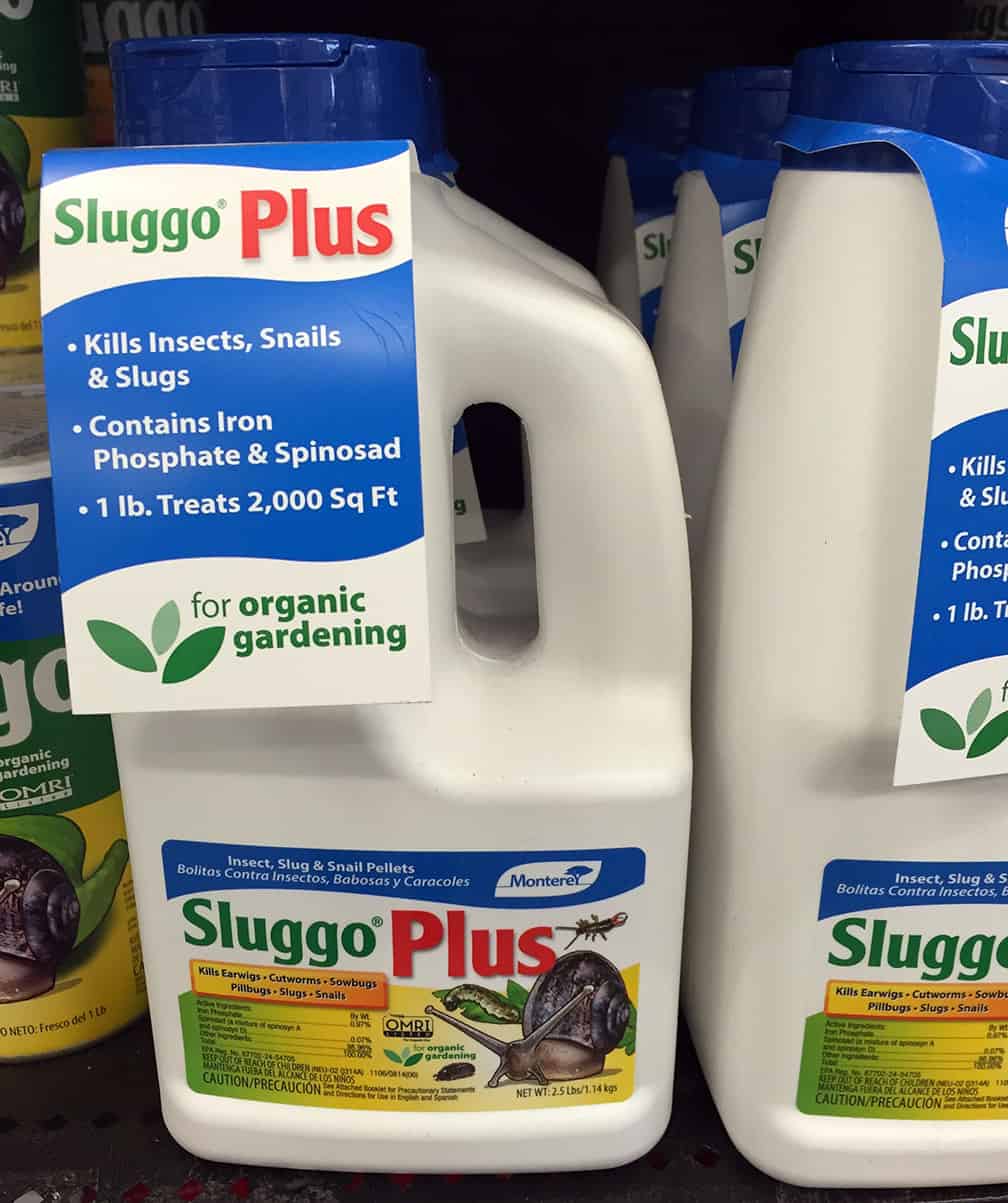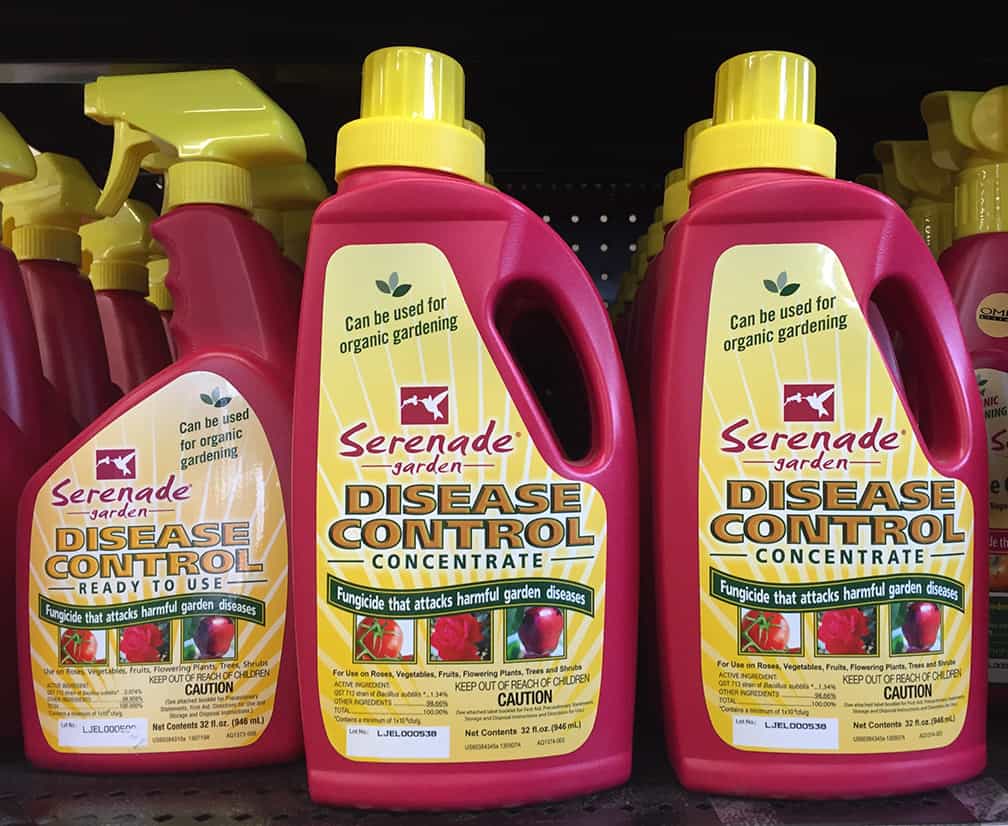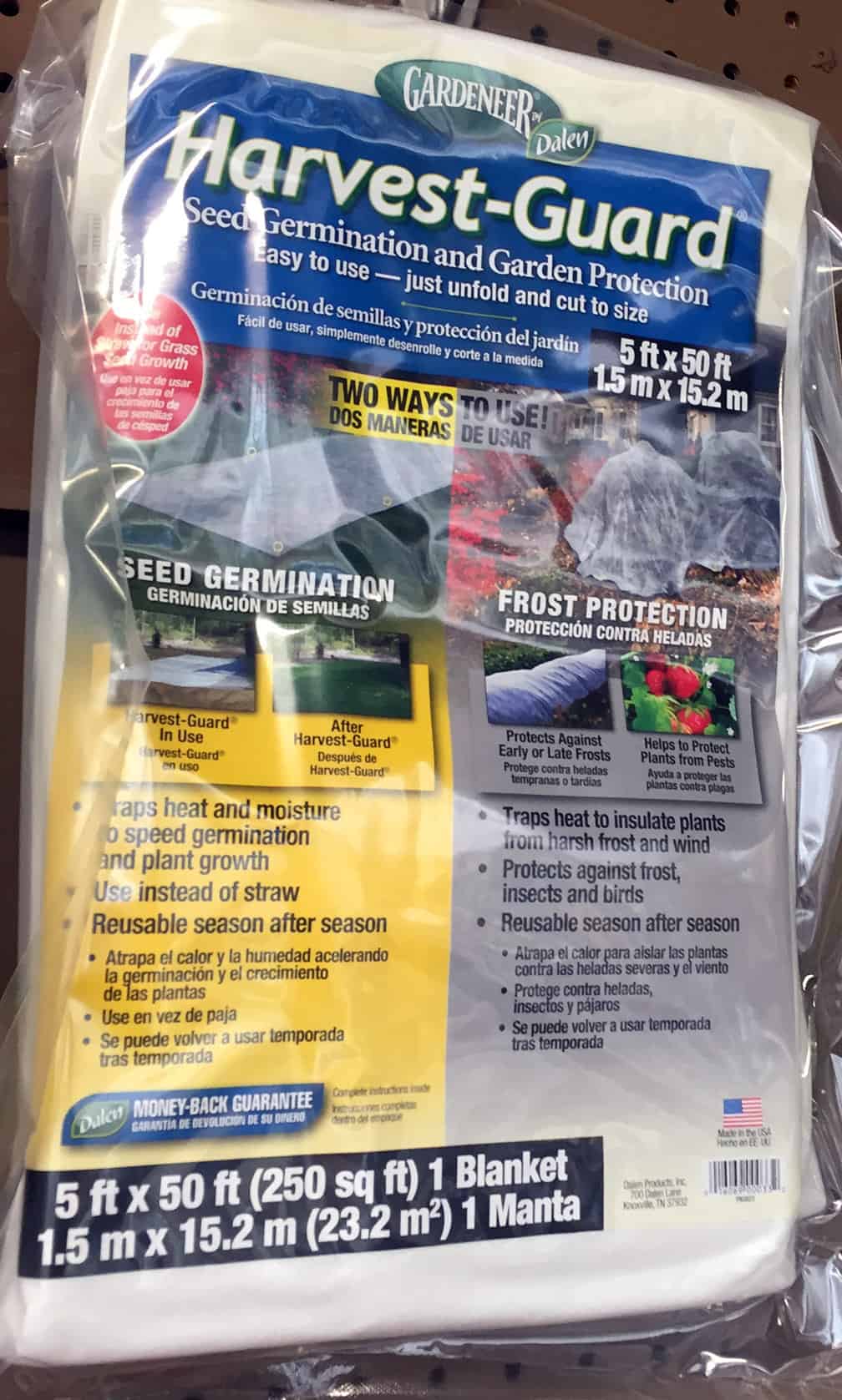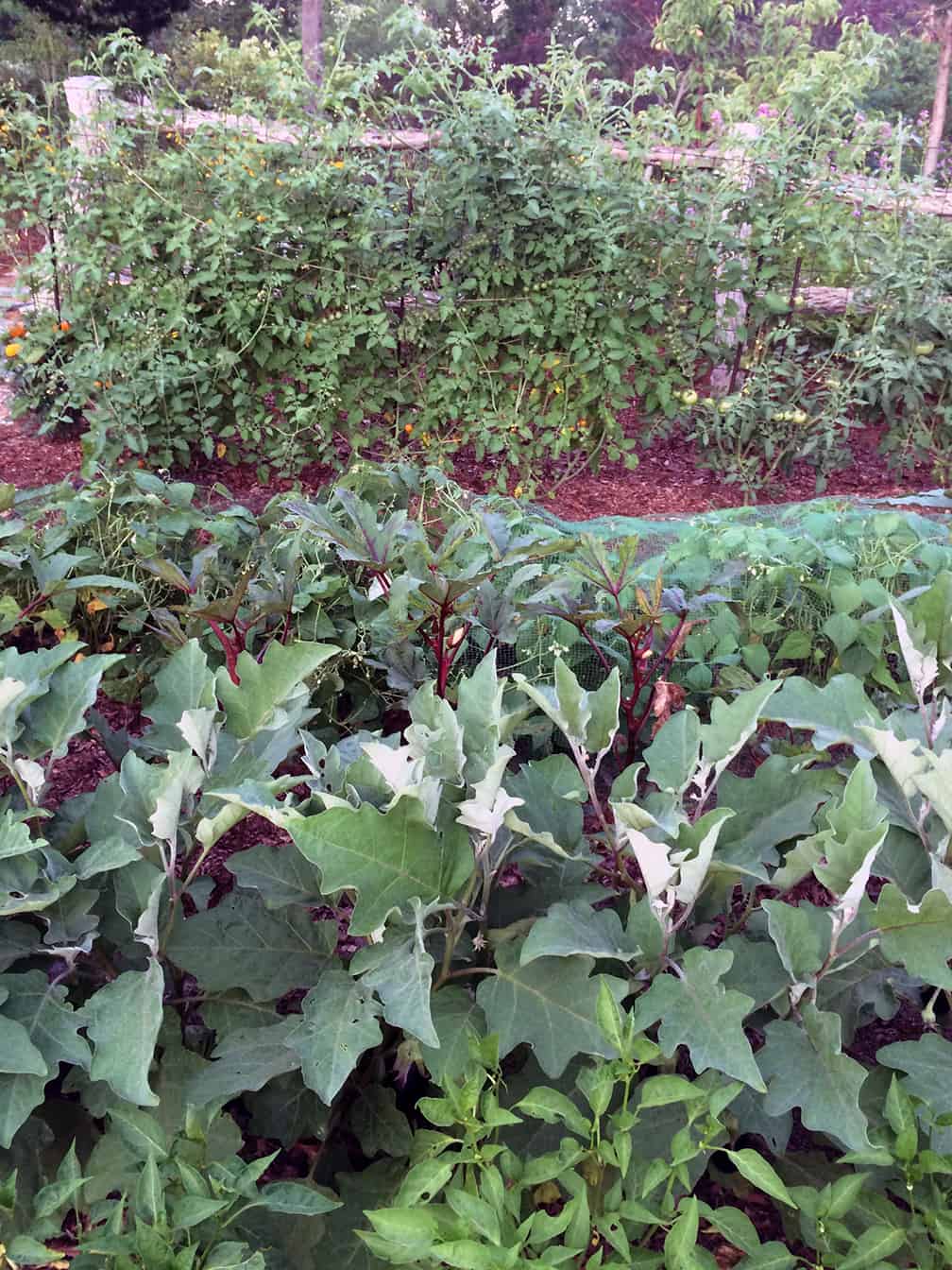This is the time of year when many of my callers/clients are asking “What’s wrong with my_______?” Fill in the blank with the vegetable plant of your choice. The following question is, of course, “And what should I do about it?”
We all plant our vegetable seeds and plants optimistically, assuming that they will grow and produce because we want and expect them to do so. It’s sweet that we’re so positive and hopeful, but reality is always lurking in the air, soil and surrounding plants. It’s a jungle out there, and our tender veggie plants are fair game.
Here are the things I always have in my garden shed or garage, and how I use them to solve my vegetable garden problems.

I sprinkle diatomaceous earth on all my newly planted veggies and emerging seedlings. It kills earwigs, flea beetles and slugs, the three most common pests on new veggie plants. Sprinkle a fine layer over the foliage and the soil around it. Note: do not dust when the plant is wet and don’t water afterwards because this makes DE less effective. Also, don’t scatter on a windy day unless you’re wearing a mask so you don’t breathe the dust. Even organic treatments aren’t good if you take them into your lungs! Use this to knock down other insects such as four lined plant bug, Colorado potato beetles etc. There are other brands of DE available, but don’t use the types that are processed for swimming pool filters – it’s not the same. And BTW – as one of our readers pointed out, this product will kill any insect it touches, both beneficial and not. So use it only when absolutely needed. I use it when my seedlings, dahlias and butterfly bush foliage are just beginning to come up or show…and I only have to dust once to protect them from earwigs.

I find that Sluggo Plus is also helpful for slug, cutworm and earwig control. I sprinkle it around newly planted annuals and perennials as an added layer of protection in times when the plants seem to be under attack. Again, this is an organic treatment that won’t harm birds, pets, or gardeners…when used as directed of course. I you stir any organic garden product into your coffee you’re on your own, and probably wasting a good product.

Spinosad is a bacteria that kills a wide range of larvae. In the veggie garden it’s good for the larvae of Colorado potato beetle, Mexican bean beetle, and the cabbage loper. Use Turbo, a spreader-sticker, for applying spinosad to kale, cabbage, broccoli etc so that it doesn’t run off the leaves. Note that there are other brands of spinosad…Captain Jack’s just happens to be the one on my shelf right now.

The main fungal problems I have in the veggie garden are leaf spot, powdery mildew and early blight. I use an organic fungicide for all of these. Right now I have Serenade on my shelf. I’ve also used Actinovate very successfully, and Green Cure for powdery mildew control. The key to using all of these products successfully is to spray frequently, ideally starting before the plant has a problem.

When it comes to quick protection from critters, you need floating row cover. When bunnies, chipmunks or other beasts are munching your crops, a fast way to protect the plants is to cover with the light weight, non-woven row cover. It’s light enough to put right on top of the plants but you can put it over hoops etc. In either case, weight it down with rocks or logs. Don’t leave gaps or the animals will find their way in and be protected while they eat as well.
Last but not least…the most important tools at your disposal are your eyes and hands. Look at your plants daily so you can catch a problem in the early days. And don’t be afraid to hand pick and smash insects, or hand pick and remove diseased foliage.

If you’re growing vegetables, you need problem solvers!

CL,
Regarding your mention above about not using Copper Fungicide along with Serenade, I’ve been told that a good routine is to alternate each of them every 7 – 10 days.
What do you think about that?
Joe – whoever told you to alternate doesn’t understand that the copper kills bacteria and Serenade is bacteria. So every time you apply the copper you’re killing off the Bacillus subtilis you put on the plant 7 days ago. And if the copper is still on the leaves when you next spray Serenade it will continue to kill off the active ingredient! Much better to use Serenade as long as possible – some years you can just use that – and if your disease situation worsens switch to copper for the rest of the summer.
Please in the future mention that diatomaceous earth kills honeybees and beneficials. It should only be used where it won’t harm them, and it should be used sparingly. I use a spoon to sprinkle it at the base of my strawberry plants and in cracks where sowbugs and others hide, but i won’t spray it.
Lynn,
Thanks for mentioning this – I will add this to the blog. It’s true that DE is should only be used when needed, usually early in the season. No pesticide is without a “downside” so all must be used with thought and care. We don’t recommend every spraying DE as this would put dust into the air which people could breathe, not to mention be a waste of the product. We recommend that you either use an empty small plastic water bottle, with 3 or 4 small holes drilled in the plastic cap to apply, or to use two plastic flowerpots put together and turned so the holes don’t quite line up. Fill with DE and then hold it over the (non blooming) plant and tap the side of the pot to release a fine dust on top of the plants and soil. You’ll use less than you would with a spoon. And by the way…those sowbugs are beneficial insects – they help decaying plant matter break down.